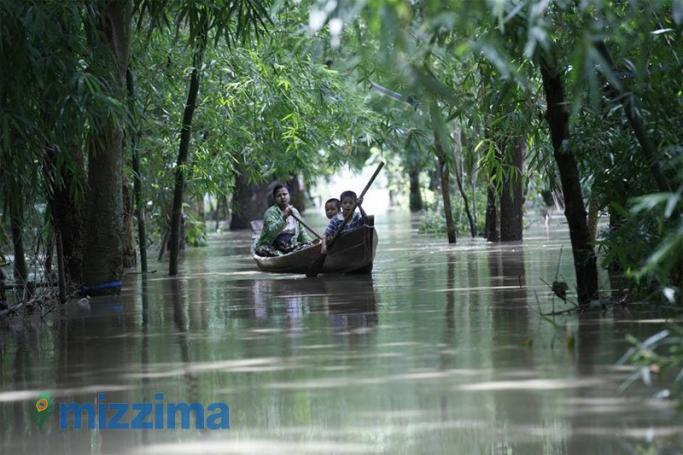President Thein Sein has called for the evacuation of low-lying areas of the Ayeyarwaddy Region as some parts of the famous river mouth are reaching dangerous heights.
Floods from a heavy monsoon season have cut through swathes of South and Southeast Asia in recent weeks, claiming hundreds of lives and displacing millions.
Twelve of Myanmar's 14 regions have been struck, with officials saying 74 people have been killed and more than 330,000 affected -- many forced into monasteries and schools as waters begin to grow, while others shrink.
OCHA released information collected from 4 August stating that the Ayeyarwaddy Region, Bago and Yangon, home to some 3.3 million people, are in danger of falling victim to the flooding crisis that has crippled northern and mid parts of the country.
Food and clean water supplies are slowly making their way into Chin State and rural parts of the country, but the slow communication, and sometimes lack there of, is tarnishing the relief effort.
In a message broadcast on radio early Thursday, President Thein Sein said areas near the Irrawaddy were at risk as the river rises "above danger level".
"As we cannot prevent natural disasters, I urge fellow citizens to move to safer places... it's the best way," he said, adding Hinthada and Nyaung Don Townships along the river were in immediate danger.
A spontaneous local NGO without a name but calling themselves “Kalay Flood Plains Rescue,” consisting of farmers and philanthropists from Kalaymyo Township, have taken it upon themselves to distribute aid to villages up to a one and a half hour boat ride away.
“It floods every year but not this bad, this is the worst in over 100 years! We could deal with the mud and water… but not like this,
It is because of the heavy rains in Chin State that have caused all the mud from the mountain side to run down into the fields and make the ground very muddy in places, we don’t know what to do,” said Thant Sin Lin, member of Kalaymyo Flood Plains Effort.
Adding, “It’s global warming!”
Additional Reporting AFP
You are viewing the old site.
Please update your bookmark to https://eng.mizzima.com.
Mizzima Weekly Magazine Issue...
14 December 2023
New UK Burma sanctions welcome...
13 December 2023
Spring Revolution Daily News f...
13 December 2023
Spring Revolution Daily News f...
12 December 2023
Spring Revolution Daily News f...
11 December 2023
Spring Revolution Daily News f...
08 December 2023
Spring Revolution Daily News f...
07 December 2023
Diaspora journalists increasin...
07 December 2023
EU official bemoans 'unpredictablity' of Chinese law on Beijing trip












